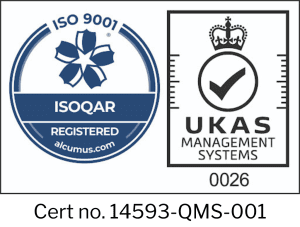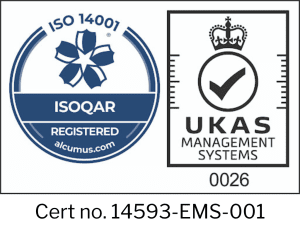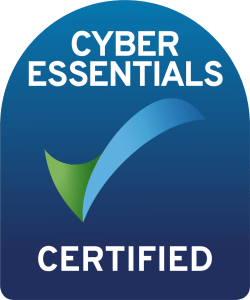



Cirrus, Stratus, Cumulus is part 1 of a 5 part series. In this post, Invotra’s CEO Fintan Galvin, introduces the first things for organisations to consider in a multi cloud world, including rethinking the IT experience, the selection process/guidance, application life-cycles and user experience.
Whether you look at your professional or personal life, we are living day to day in a multi cloud world.
We have the usual suspects such as Google, Ring, Facebook, Spotify and Netflix, but then you’ve also got car manufacturers, the government and phone networks, to name just a few clouds that have our data.
Let’s start with a reality check. Many people are paying for monthly subscriptions for applications within their workplaces for their team or project to use that that IT and/or procurement don’t even know about.
At least in the old days, IT had control (mainly) as they had to install it.
We are all facing a world of choice like never before. No longer do we have to buy and install servers and build inhouse support teams to use applications. Now, we can simply log on and pay a subscription that falls well below the radar of most procurement and IT controls. Even if the policy says otherwise, the reality is this is happening.
Multiple people are frequently setting up accounts with the same SaaS suppliers and this combined with IT migrating to Office 365 / Google docs etc. means it’s not a choice to be in a multi cloud world.


The fact of the matter is, you are already in a multi cloud world whether you like it or not, and there is no going back. However, just because you use Office 365, doesn’t mean you should not ignore applications such as Salesforce or Invotra. This would just be silly and let’s face it, you are already even if you don’t realise it.
The people driving the single cloud agenda are often the suppliers with the most to benefit and those who want to lock in their clients, frankly anyone pushing the single cloud agenda is trying to control the uncontrollable and should be roundly ignored.
Simply put, you would be mad not to use a selection of services across different cloud platforms. That being said, whilst it is awesome to broaden your horizons, it brings with it some different challenges that we need to think about.
You should fundamentally change how you think about IT and think more inline with microservices. You can then break apart your service lines and handle them across multiple suppliers.
Models like SIAM are really helpful in terms of starting down this road, however, it only applies at a service level and you also need to think at a product/function level.
You need to think about the applications used as end points for specific micro functions of the overall experience. Clear architectural lines that help users to understand the intended use of an application are critical. While you cannot control the applications and what they offer, you need to figure out how you can apply Information Architecture, Security and UX models to help users.
Firstly, you need to make sure you update your procurement and IT guidance so that people know how you want them to work with a SaaS model. However, if you make this onerous then your people will not follow it.
Instead, you need to think about helping them to make good decisions by providing clear simple helpful guidance that helps them. Draconian approaches will either stop people looking at leveraging the amazing services available that could help your organisation or they will look for ways around them
Suppliers will make it super easy to purchase, you have to make it super easy to purchase in the way you want.
Set out key guidance covering critical areas e.g. All data must be available in a structured manner via APIs, suppliers must have ISO 27001. The simpler and clearer this is, the more it will be used.
You also need to think about micro purchasing rather than macro purchasing. Large deals are easy for enterprises, small frequents ones are way more difficult and therefore your IT asset management needs to be built to handle this.
Your applications will fall into different categories- short term, medium and forever.
However, your data and business functions are either forever or transient.
Focus your life-cycle not around the application but around the data and the business function they serve.
It is an amazing opportunity to move to not only a more streamlined IT world but a massively improved end user experience rather than a complete mess of uncontrolled different experiences that constantly change outside of your control.
It is worth noting, one of the key pushes you will get from the big players is “if you use us, the experience will be the same across everything” and to be fair this is a reasonable argument. However, the experience is not yours, it is theirs and it will fit with what they want but short and long term. The IA will have gaps for the next product they want to launch or something else from their stable that they want to sell you.
In a world where staff are willing to move from one job to another, it’s critical that you control the experience so that you create a branded experience they love whilst also recognising this continual movement of people.
You have to build the experience that works for you.
Cirrus, Stratus, Cumulus is part 1 of a 5 part series.
In this post, Invotra’s CEO, Fintan Galvin, introduces the first things for organisations to consider in a multi cloud world, including rethinking the IT experience, the selection process/guidance, application life-cycles and user experience.
Even in our personal lives, we are living day to day in a multi cloud world, google, ring, government, car manufacturers, facebook, spotify, Netflix are all clouds that have our data.
Let’s start with a reality check. People are paying for monthly subscriptions for their team or project to use specific applications that IT / Procurement don’t even know about, at least in the old days IT at least had control (mainly) as they had to install it.
We are all facing a world of choice like never before, no longer do we have to buy and install servers and build inhouse support teams to use applications, we can just log on and pay a subscription that falls well below the radar of most procurement and IT controls. Even if the policy says otherwise, the reality is this is happening.
Frequently multiple people are setting up accounts with the same SaaS suppliers and this combined with IT migrating to Office 365 / Google docs etc. mean it’s not a choice to be in a multi cloud world. You are already in one whether you like it or not and there is no going back. Just because you use Office 365 you should not ignore Salesforce or Invotra, this would just be silly and, let’s face it, you are already even if you don’t realise it.
The ones driving the single cloud agenda are the suppliers with the most to benefit and those who want to lock in their clients, frankly anyone pushing the single cloud is trying to control the uncontrollable and should be roundly ignored
Simply put, you would be mad not to use a selection of services across different cloud platforms. While this is awesome, it brings with it some different challenges that we need to think about.
You should fundamentally change how you think about IT and think more inline with microservices so that you can break apart your service lines and these can be handled across multiple suppliers.
Models like SIAM are really helpful in terms of starting down this road, however it only applies at a service level and you need to think at a product / function level.
You need to think about the applications used as end points for specific micro functions of the overall experience. Clear architectural lines that help users to understand the intended use of an application are critical, while you cannot control the applications and what they offer you need to figure out how you can apply Information Architecture, Security and UX models to help users.
Firstly, you need to make sure you update your procurement and IT guidance so that people know how you want them to work with SaaS. However if you make this onerous then your people will not follow it, you need to think about helping them to make good decisions by providing clear simple helpful guidance that helps them. Draconian approaches will either stop people looking at leveraging the amazing services available that could help your organisation or they will find ways around it.
The suppliers will make it super easy to purchase, you have to make it super easy to purchase in the way you want. Set out key guidance covering critical areas e.g. All data must be available in a structured manner via API’s, suppliers must have ISO27001. The simpler and clearer this is the more it will be used.
You also need to think micro purchasing rather than macro purchasing, big massive deals are easy for enterprises, small frequents ones are way more difficult and therefore your IT asset management needs to be built to handle this.
Your applications will fall into different categories, short term, medium and forever, however your data and business functions are either forever or transient.
Focus your lifecycle not around the application but around the data and the business function they serve.
It is an amazing opportunity to move to not only a more streamlined IT world but a massively improved end user experience or a complete mess of uncontrolled different experiences that constantly change outside of your control.
Note this is one of the key pushes you will get from the big players, “if you use us the experience will be the same across everything” and to be fair this is a reasonable argument however, the experience is not yours, it is theirs and it will fit with what they want but short and long term. The IA will have gaps for the next product they want to launch or something else from their stable that they want to sell you
In a world where staff are willing to move from one job to another it’s critical that you control the experience so that you create a branded experience they love whilst also recognising this continual movement of people.
You have to build the experience that works for you.
– SaaS vs PaaS vs IaaS – when and why
– Where does hybrid cloud fit in
– Managing the influx of small SaaS applications
– Dependency management














This is an necessary category.
Undefined cookies are those that are being analyzed and have not been classified into a category as yet.